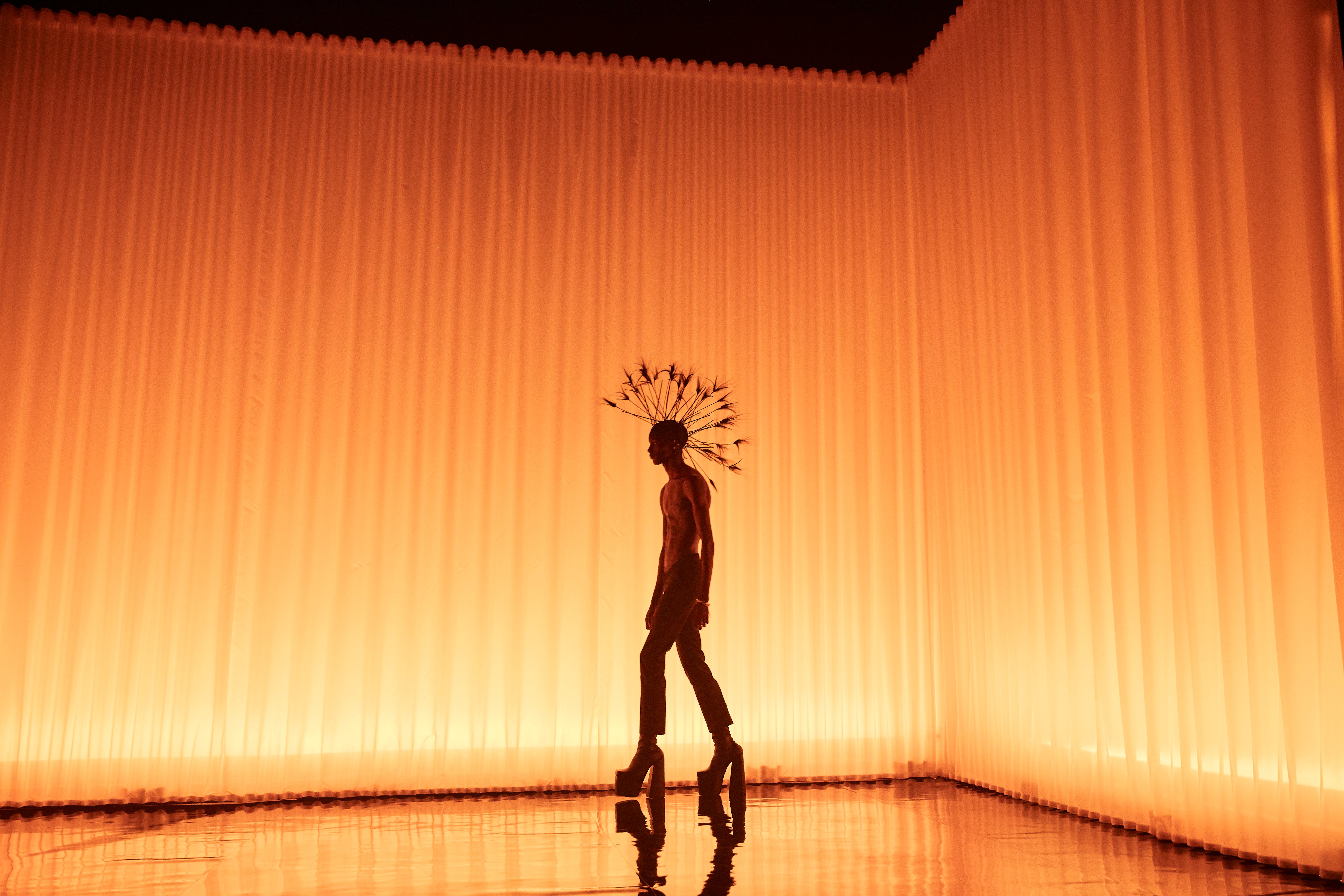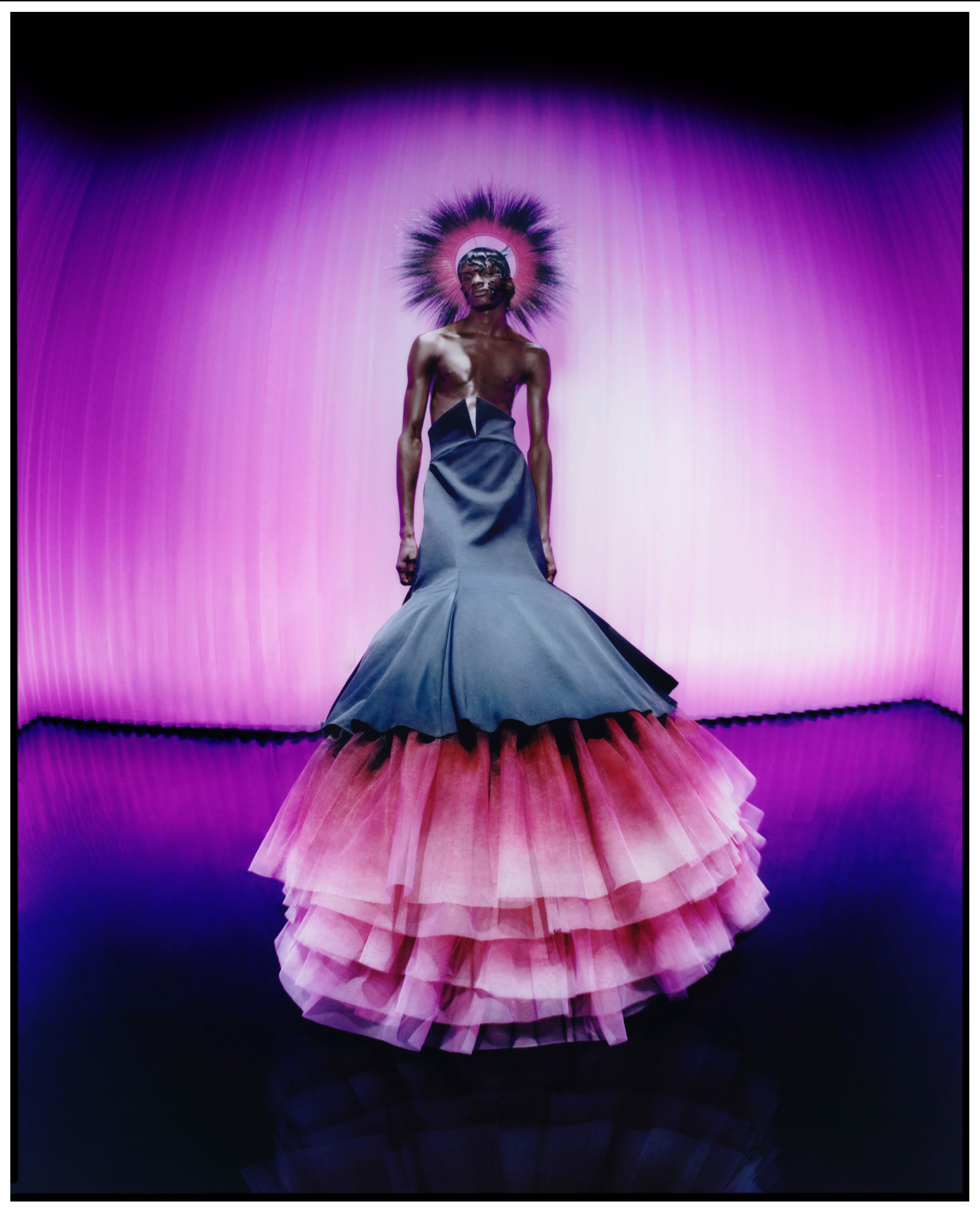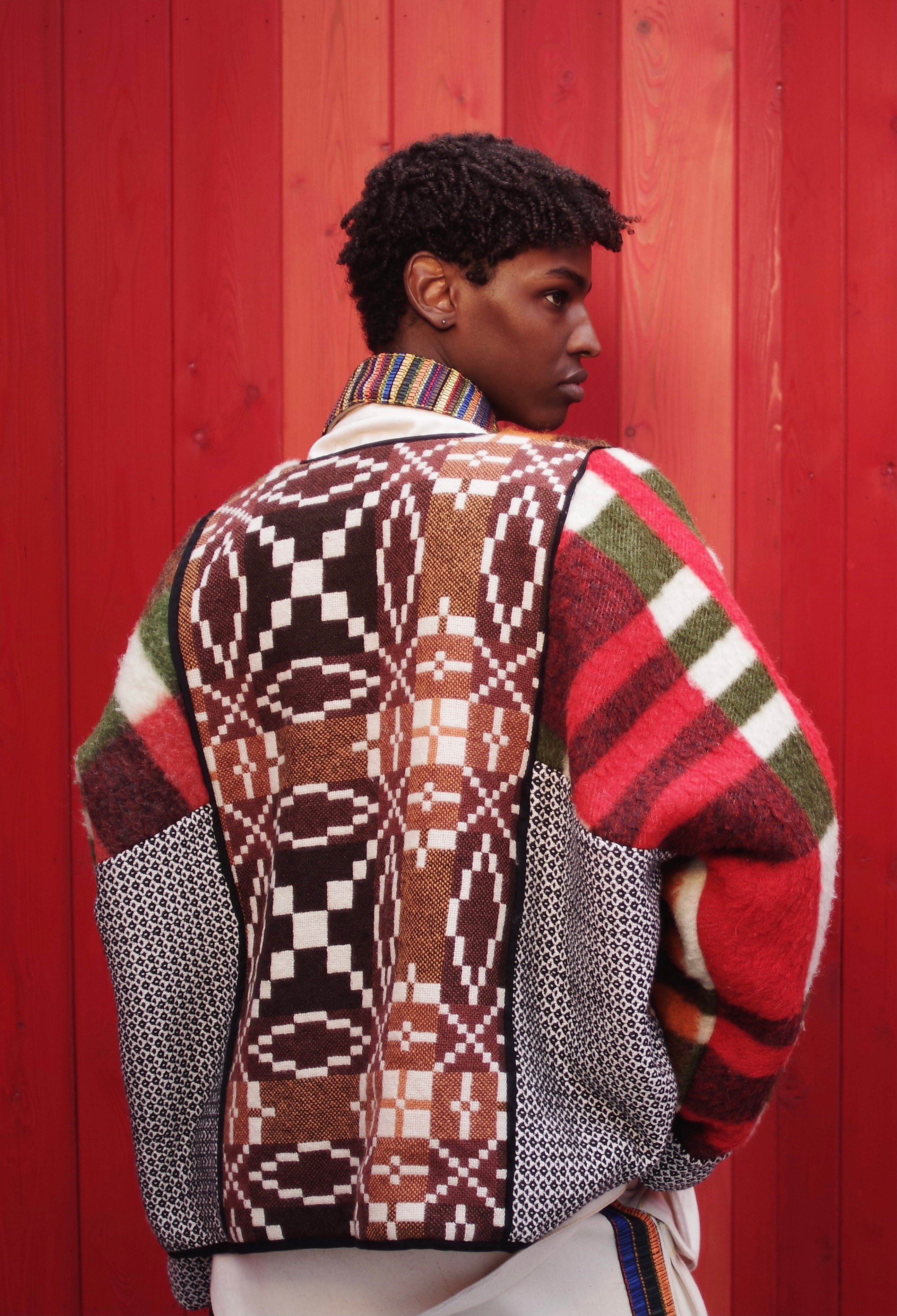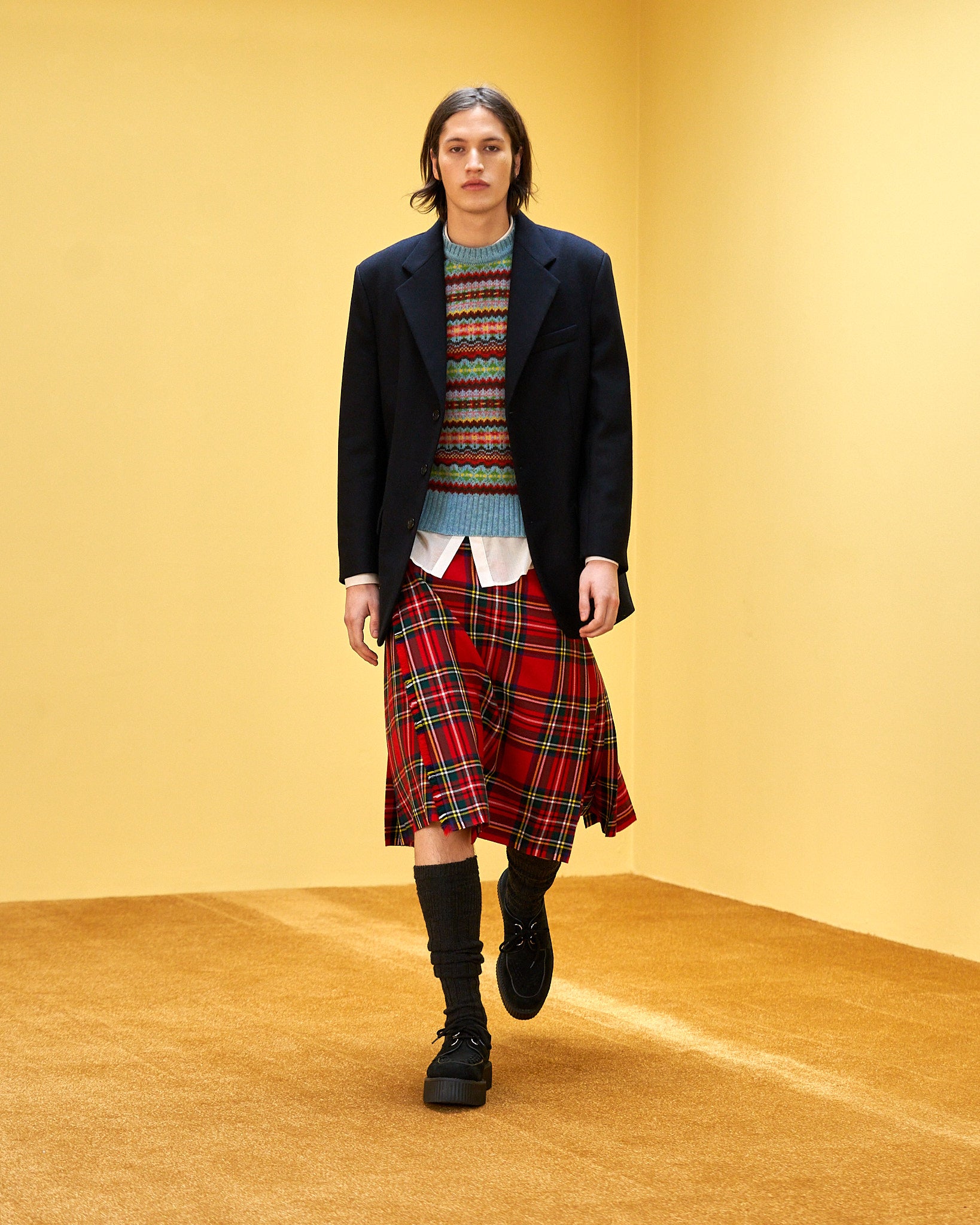How gender fluidity is revolutionising London Fashion Week
Olivia Petter examines the significance of LFW marking its first official gender-neutral showcase


Your support helps us to tell the story
From reproductive rights to climate change to Big Tech, The Independent is on the ground when the story is developing. Whether it's investigating the financials of Elon Musk's pro-Trump PAC or producing our latest documentary, 'The A Word', which shines a light on the American women fighting for reproductive rights, we know how important it is to parse out the facts from the messaging.
At such a critical moment in US history, we need reporters on the ground. Your donation allows us to keep sending journalists to speak to both sides of the story.
The Independent is trusted by Americans across the entire political spectrum. And unlike many other quality news outlets, we choose not to lock Americans out of our reporting and analysis with paywalls. We believe quality journalism should be available to everyone, paid for by those who can afford it.
Your support makes all the difference.Since its inception in 1984, London Fashion Week (LFW) has traditionally been a showcase for womenswear, with menswear reserved for separate biannual events every January and June.
However, as time has progressed, so have societal attitudes towards gender and the ways in which we think about how we dress to reflect that. Hence the rise of unisex clothing, which we’ve seen steadily increase in recent years, with the likes of Zara and H&M introducing gender-neutral lines in 2016 and 2018, respectively, while emerging designers are launching brands with no specific gender in mind. Meanwhile, luxury labels, including Burberry, started amalgamating their collections, using LFW as a platform to showcase both menswear and womenswear.
It was about time, then, that LFW officially became a gender-neutral event. The British Fashion Council (BFC) announced the switch last year, with chief executive Caroline Rush explaining its aims to “redefine” the fashion week model.
“Moving London Fashion Week Men’s into LFW in February will continue to de-gender [the event], allow designers greater flexibility to consider what collection they show when and minimise travel requirements, taking us one step closer to a more sustainable future,” she said.
Dylan Jones, BFC’s menswear chair, noted that “a lot has changed” since they launched LFW Men’s. “This year’s pandemic made us all rethink the current system in place,” he added.
We may only be a few days into LFW’s first foray into gender-neutrality, but the impact is already seismic. Proceedings got off to a spectacular start on Thursday, courtesy of fledgling talent Harris Reed. The British-American designer is renowned for his gender-bending creations, which have been worn by the likes of Ezra Miller, Solange, and Harry Styles – yes, Reed was responsible for that dress on the cover of American Vogue.
For his debut at LFW, Reed created a six-piece collection titled For Now, Unexplained, which comprises a series of tuxedos reimagined through a gender-fluid lens – think suits with full tulle skirts and cigarette trousers with flourishes of fuchsia constructions.
“The Harris Reed world is all about playing with ideas of gender,” Reed tellsThe Independent. “People get so outraged by this idea of not wearing items that are ‘for their gender’, so this collection is all about toying with that and almost being quite tongue-in-cheek.”
For Reed, this concept is realised through a series of garments that can be perceived as “half male” and “half female” in that they combine traditionally gendered items of clothing (like dresses and suits) to create a hybrid aesthetic that is more fluid.
As for why it has taken so long for LFW to become an officially gender-neutral event, Reed explains: “People like to put others in boxes. When you tell someone that something doesn’t fit into a male or female binary, they don’t know how to react and compute that.
“So I think it took fashion a while because it’s a business and people were scared about pivoting towards gender-fluidity because you can’t make money from it. But hopefully, as brands like Gucci and myself have shown, that’s not the case.”

It was a fitting way to mark this new era of LFW. Elsewhere, day one saw the reveal of Bethany Williams’ gender-neutral coat collection, which is being sold at Selfridges. The nine-piece collection features a series of colourful coats made from upcycled vintage blankets sourced by Williams herself on trips around the UK. “We haven’t really been specifying our collections to a particular gender for a while now,” the award-winning designer tells The Independent. “We want to make our work accessible to a broad audience and expand on our tailoring shapes to reflect that.”
Williams adds that she was “so excited” when she heard LFW was becoming gender-neutral. “It’s a really great move,” she adds, before explaining how industry and societal shifts have meant that we no longer need distinct women and menswear fashion weeks. “There was a real need for it before,” she adds, “particularly for menswear, because so many menswear designers didn’t feel like their work was valued so they wanted a dedicated space to showcase it. But now it’s so fluid, it doesn’t make sense anymore.”

But a gender-neutral fashion week doesn’t simply mean gender-neutral collections. Womenswear designers renowned for their traditionally feminine aesthetics have also taken note of the shift by introducing unisex pieces into their lines this season. Consider Temperley, the British label famed for its glitzy evening gowns worn by everyone from the Duchess of Cambridge to Dakota Fanning. “This season, we’ve introduced a few gender-neutral items,” founder Alice Temperley tells The Independent, pointing to a hooded sweatshirt adorned with the brand logo and a fleece-lined coat that she says her boyfriend regularly wears.
Elsewhere, gender-fluid looks also found their way into Molly Goddard’s autumn/winter 2021 collection. The British fashion designer is known for her frothy frocks, usually made in vibrant shades of tulle – remember Villannelle’s voluminous candy-floss coloured gown from Killing Eve? And while many of her signature dresses featured in her collection this season, Goddard also introduced boxy blazers, unisex knits, and tartan kilts modelled by men. Discussing her influences for the season in the show notes, Goddard explains how she was inspired by a series of books she had at home and the ways in which different generations wore their clothes. This cast included: “a glamorous smoking grandmother, a sulking teenage son, an old man in tweeds and a young girl proudly ready for a night out,” she writes.

This industry-wide celebration of gender-fluidity was even felt among the designers whose collections were exclusively modelled on women. Take Bora Aksu, the Turkish-born designer known for his ethereal dresses and pastel palettes. This season, Aksu fused masculine and feminine tropes in his designs to reflect the nonconforming spirit of French mathematician and physicist Sophie Germain, who, in the 19th century, continued working independently as a mathematician despite the fact that she was not permitted to earn money from the role due to her gender.
All this marks an exciting step for the British fashion industry, one that forces the consumer to ask some key questions, like what makes an item suited to a particular gender in the first place? Why should a specific type of garment be marketed towards women, and not men, or non-binary people? And, crucially, is the world ready to embrace gender fluidity on a larger sartorial scale?
One would hope so, though recent commentary – think conservative commentator Candace Owens calling to “bring back manly men” after seeing Styles in that dress – may suggest we still have a bit of a way to go. Still, this season at LFW shows that progress is afoot, and the industry is making waves to be more inclusive in a way that arguably offers designers more room for innovation and creativity. Isn’t that what fashion is supposed to be about in the first place?

Join our commenting forum
Join thought-provoking conversations, follow other Independent readers and see their replies
Comments